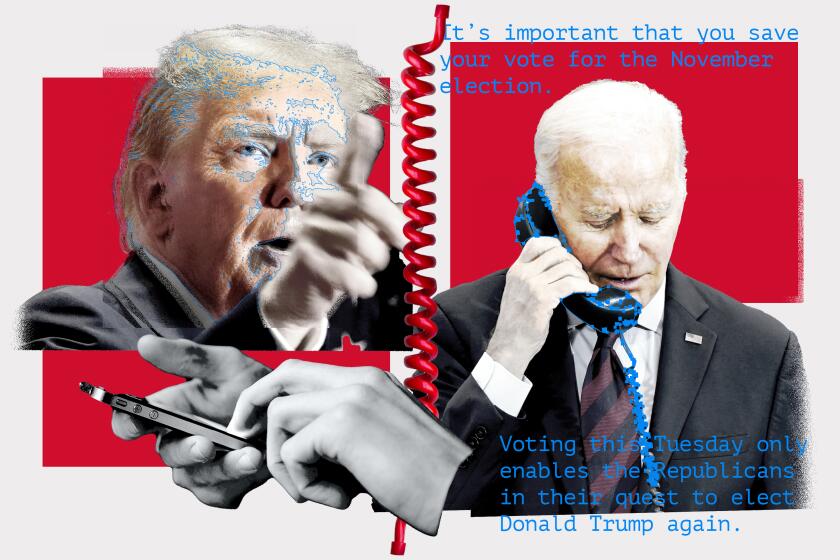Down on the Collective Farm : SOVIET AGRICULTURE <i> by Zhores A. Medvedev (W.W. Norton: $27.50; 421 pp., with maps) </i>
The value of this book as an analysis of Soviet agricultural policy and performance derives from the author’s long and intimate involvement as a biologist and geneticist in the Soviet Union. Moreover, writing from London, he was able to express his views with objectivity and candor, a privilege denied his former Russian colleagues in their native land.
At the time of the Russo-Japanese War of 1904-05, there were in European Russia 134,000 pomeshchiki (large estate owners) and 12 million peasant communal households. Following Russia’s humiliating defeat, there were many peasant uprisings, eventually resulting in the peasants being permitted to withdraw from their communes and start their own farms.
Among these liberated peasants were the kulaks , who had been the most hard-working, efficient and prosperous members of their communes. Now their farms were family based; some began employing agricultural workers and became rural bourgeoisie.
Despite their relatively small numbers, the kulaks produced 38% of Russia’s food products and supplied half of the marketable surplus in the period 1909-13. Russia had become the largest exporter of grain, “technical” crops (cotton, hemp, flax, sugar beets, etc.) and livestock products.
After Russia’s defeat in World War I, and well before Lenin’s decree that nationalized the land, the peasants had already confiscat ed about 150 million hectares of arable land, pastures and forests and distributed them to 25 million individual communal households. But Lenin, siding with the Bolsheviks, considered peasants as a capitalist class and legalized the requisition of food from the villages of force and without compensation.
Then, in an about face, in March, 1921, the Tenth Party Congress approved a New Economic Policy that abolished the state grain monopoly and legalized free enterprise in food and light industry. Kulaks , no longer “enemies of the people,” were encouraged to increase food production, but it was too late to prevent the famine of 1921. On July 11 of that year, the Soviet government appealed to the West for aid.
Following Lenin’s death in January, 1924, Stalin dominated the next three decades of Soviet agriculture. By 1929, the Soviet leadership launched a new offensive against peasants--de-kulakization and intensified collectivization of the kolkhozy (collective farms)--enforced by a campaign of terror, deportation, exile and execution “on a scale hitherto unknown in Russian history.” More than a million peasant families were displaced. Then came the famine of 1932-1933, in which more than 5 million people lost their lives.
Stalin’s death in 1953 provided some hope that the food crisis could be alleviated. But not through the contributions of science.
Khrushchev was even more enthusiastic than Stalin for Lysenko’s pseudoscientific neo-Lamarckian belief in the inheritance of characteristics rapidly acquired through purposeful manipulations of the environment. Lysenko, as head of the vast agricultural research network and supported by Soviet leaders who detected ideological implications in his bogus theory, was able to stifle valid genetic research for decades.
Khrushchev’s Virgin Land Program opened up new areas of fertile soil in Siberia. Hundreds of new Sovkhozy (state farms) were established, and in good years, the Soviet Union became self-sufficient in grain. In other projects, Khrushchev was less successful, having committed many economic and organizational blunders.
Meanwhile the fertility of the virgin lands declined, and erosion became an ecological disaster. Grain again had to be purchased from capitalist countries.
After Khrushchev’s forced retirement in 1964, Soviet agriculture was never again dominated by a single personality. Those who replaced him relied on collective leadership and consensus. They realized the vital importance of small subsidiary household plots leased for private cultivation directly or through the kolkhozy or sovkhozy . The latter have no way of mechanizing the production of the many labor-intensive vegetable and fruit crops, so important for a balanced diet.
Occupying only 1.6% of the arable land, private plots supply about 60% of all potatoes, 30% of vegetables, 50% of fruit and 30% of meat, milk and eggs. Moreover, they tend to slow down the troublesome exodus of the rural population to the cities.
There is now some indication of support for less orthodox systems of economic incentive and for a degree of organizational flexibility that rewards a kind of private initiative based on the common interest of the brigade or zveno .
In Medvedev’s opinion, a kind of deregulation and opportunity for freedom of choice between different economic and organizational models is urgently needed. Will Gorbachev’s strong support for glasnost and perestroika favor such a policy?
For economic and geopolitical reasons the Soviet Union’s chronic food crisis looms large on the world scene. “Soviet Agriculture” explains why the crisis cannot be resolved under an outdated and irrational system that developed “outside the traditional pattern of Western civilization.” The book is well written, well documented, comprehensive and will be easy to read and understand by a wide range of specialists and laymen. I highly recommend it.
More to Read
Start your day right
Sign up for Essential California for news, features and recommendations from the L.A. Times and beyond in your inbox six days a week.
You may occasionally receive promotional content from the Los Angeles Times.






